If you’re a new freelancer, solopreneur, or small business owner and you’re trying to sort out how you’ll take payments from customers, it might have come as a shock just how complex these systems can be.
As a matter of fact, you might even be pondering a critical philosophical conundrum: “I can make payments on my phone; shouldn’t I just be able to accept payments on my phone?” Well, it’s actually incredibly easy, even without using the consumer-facing versions of things like PayPal and Venmo.
Now, with that in mind, it’s important to choose the right app, or rather, the right mobile point of sale provider, so you can make the most of this convenience. That’s where this article comes in—we’re breaking down our six leading picks for mobile POS solutions to make your search easier.
- Best overall mobile POS app: Square
- Best for e-commerce: Shopify
- Best choice of payment processors: Clover
- Best for restaurants: Toast
- Best variety of payment types: PayPal
- Best for complex retail: Lightspeed
Top mobile POS systems compared
There are plenty of important, valuable, and must-have features for solutions in the payment provider space. We can’t list everything in our comparison tables, though (at least, we can’t do that and still make it easy to scan), so we’ve focused on the highlights.
All niche-specific concerns aside, everyone needs to know core details like the costs, the hardware limitations, and the integration options.
| Square | |||||
| Shopify | |||||
| Clover | |||||
| Toast | |||||
| PayPal | |||||
| Lightspeed |
Square: Best overall mobile POS app
Our rating: 4.8
We kick our list off with the original trailblazer in smartphone-as-POS implementation. Square broke into the market with its flagship mobile accessory: a smartphone-compatible card reader that plugs in via the headphone jack. Since then, it’s expanded its offerings significantly, and in many cases, Square can be used to take payments via smartphone without any other hardware needed.
As an easy-to-use, widely integrated, and highly trusted tech solution in the financial space, Square takes our top spot as the best all-arounder. It can’t cover every use case, and it has a few noteworthy limitations, of course, but few brands offer a solution as effective for as broad a market as Square.
Why we chose Square
If you’re looking for a reliable option with minimal barriers to entry, Square is your go-to solution. You can easily turn your smartphone into your always-at-hand POS with the Square app, and there’s no subscription fee to use it. Even better, they ship you a free magstripe card reader when you sign up to use their POS software, so even customers without a way to make contactless payments no longer present an issue.
Pricing
If you’re just using the mobile app, Square does not charge a monthly subscription fee, just the per-transaction costs, which come in three flavors:
- Card present: 2.6% + $0.10 per transaction.
- Card not present: 2.9% + $0.30 per transaction.
- Keyed in: 3.5% + $0.15 per transaction.
In addition to Square’s standard point-of-sale app, it also has dedicated POS apps for retailers, restaurants, and appointment-based businesses. The baseline version of all of these is free, though a paid subscription unlocks advanced features.
Features
- Get started quickly and at no cost with its subscription-free mobile POS app.
- Plenty of upgrade options for those who need them — dedicated POS hardware, premium plans with added features, and other business management and commerce features.
- Chargeback fees are waived up to $250 per month.
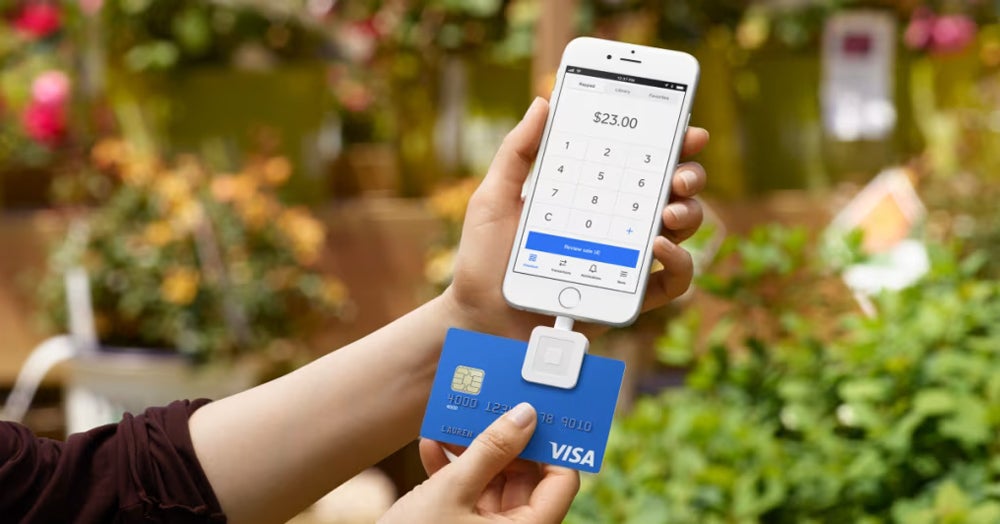
Pros and cons
| Pros | Cons |
|---|---|
|
|
Shopify: Best for e-commerce

Our rating: 4.5
Where Square made its name facilitating card-present transactions, Shopify did it by enabling card-not-present (CNP) purchases for e-commerce. One of the leading online retail platforms, Shopify serves as the transactional foundation of digital storefronts around the world. It’s not just for online purchases, though.
Depending on your business’s ratio of online to in-person sales, Shopify has a number of options to do both with the same tool. And while we wouldn’t necessarily recommend it if you never sell online, it’s an excellent choice for those who do most (but not all) of their business through the store on their website.
Why we chose Shopify
“Omnichannel” is an example of tech jargon with little meaning and even less value, but it’s tempting to use it here. Obviously, Shopify’s bread and butter is e-commerce sales, but it can help you take payments through nearly every possible platform or channel where transactions happen regularly. And, critically, you can move seamlessly from your online transaction to in-person sales with very little hassle (and nothing but a smartphone as hardware).
Pricing
Shopify offers five different subscription tiers that include POS functionality. Subscription costs vary based on whether you also sell online, how many POS terminals you need, the number of staff accounts you want, and if you’re using Shopify to manage your online store and inventory.
An important detail here is that per-transaction costs go down steadily as monthly fees go up.
- Basic (in-person only): $5/month (no discount for yearly billing).
- Retail (in-person only): $89/month ($79/month if billed yearly).
- Basic (online + in-person): $39/month ($29/month if billed yearly).
- Shopify (online + in-person): $105/month ($79/month if billed yearly).
- Advanced (online + in-person): $399/month ($299/month if billed yearly).
Features
- Specialized e-commerce-focused POS functionality.
- Site builder with an integrated digital storefront.
- Expansive secondary features, from marketing automation to shipping rate discounts.
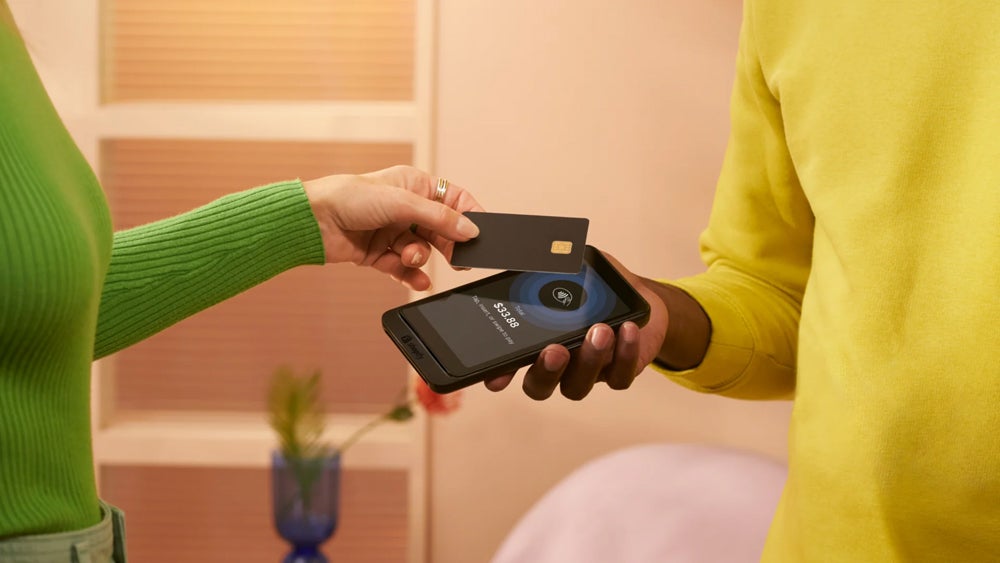
Pros and cons
| Pros | Cons |
|---|---|
|
|
Clover: Best choice of payment processors

Our rating: 4.45
In a lot of cases, a business looking for a new POS solution already has a merchant account and payment processor picked out. They’re just looking to facilitate in-person payments or upgrade to better tools. Clover is our pick for that very situation.
Clover’s product lineup includes a number of impressive dedicated POS devices. But even if all you’re looking for is the software needed to take payments via mobile, they’re a solid solution that makes it easy to “bring your own processor,” as it were.
Why we chose Clover
You saw that staggering 5% commission Shopify charges for its low-cost subscribers that use a third-party processor? Clover is the answer to that dilemma. Use their tech, but keep your financial partners as long as they operate on the Fiserv network. It’s as simple as that.
Pricing
Clover’s monthly pricing varies depending on your industry, primarily because different plans include different hardware packages. There is a very basic payment processing plan for $0 per month. If you’re looking for a little more functionality, the base monthly price for POS is $14.95.
As for which category specifically offers POS via smartphone, that’s home and field services.
- Starter: $0 + $14.95/month.
- Standard: $49 + $14.95/month (includes mobile card reader peripheral).
- Advanced: $50/month for 36 months, or $14.95/month plus $599 one-time purchase (includes dedicated mobile POS).
Features
- Used and preferred by a number of independent payment processors (possibly even yours).
- Offers the freedom to bring your own processor rather than forcing you to use theirs (or charging you extra for the privilege).
- Includes advanced inventory features that both small businesses and growing brick-and-mortar operations will find helpful.
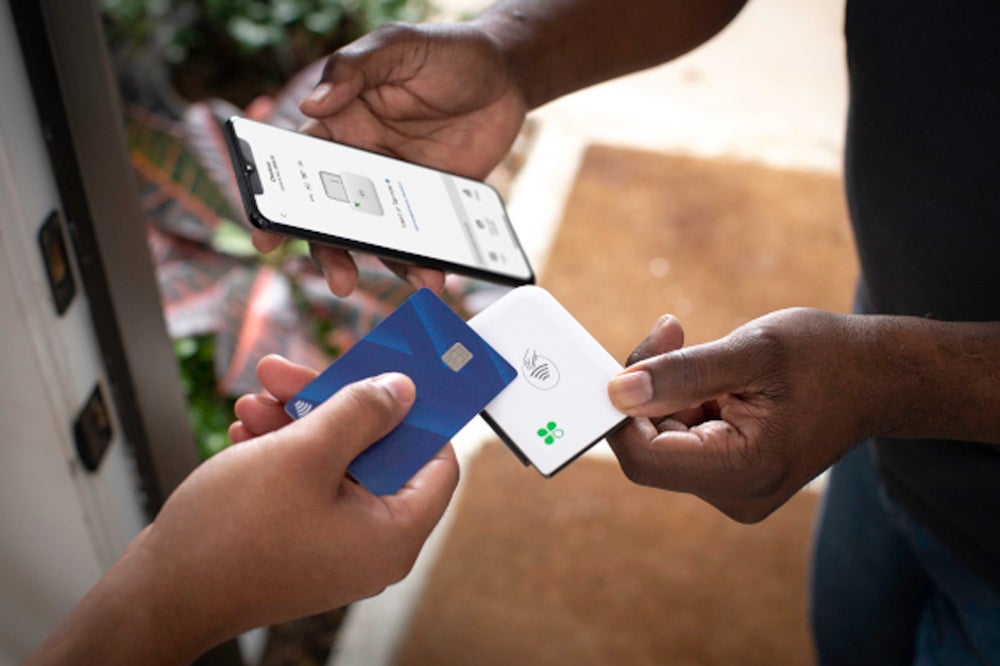
Pros and cons
| Pros | Cons |
|---|---|
|
|
Toast: Best for restaurants

Our rating: 4.4
Food service is an industry with some very unique considerations. Setting aside things related to food regulations, sanitation, and safety, even the process of taking payment looks different from most other industries. On top of that, there are common workforce considerations, like table management, that benefit dramatically from having tie-in software solutions.
We included Toast on this list as our pick for these businesses, which might not be as adequately served by the more generally scoped brands here. Designed specifically with restaurants and food service in mind, Toast provides POS solutions that simplify and enhance more than just the part of the job where the check is paid for.
Why we chose Toast
Not every tool needs to be use case-specific, and not every use case requires a specialized tool. But some puzzles have very precise answers, and keeping a diner, food truck, or dessert parlor operational is one of them.
Among its other advantages, Toast offers both software and hardware designed around the needs of professionals in the restaurant industry, making it easier to manage inventory, tables, payroll, menus, and a whole lot more.
While not technically a mobile app, Toast does offer a mobile POS solution, Toast Go 2, that allows you to take orders and payments anywhere — at a food truck, on the patio, tableside, and more.
Pricing
Toast offers three plan options based on the nature of the hardware setups your businesses need.
- Starter Kit: Starts at $0/month.
- Point of Sale: Starts at $69/month.
- Build Your Own: By quote.
Toast also comes with built-in payment processing, which varies by plan:
- Starter Kit: 3.09% – 3.69% + $0.15.
- Point of Sale
- 2.49% + $0.15 for card-present transactions.
- 3.50% + $0.15 for keyed-in and card-not-present transactions.
- Custom pricing is also available.
Features
- The Toast Starter Kit includes free hardware setup and starts as low as $0 per month.
- Includes functions specific to food service, including table management, payroll, menu management, a kitchen display system (KDS), scheduling features, and more.
- Toast Mobile Order & Pay™ enables customers to make food selections and pay for their meals from their own smartphones.
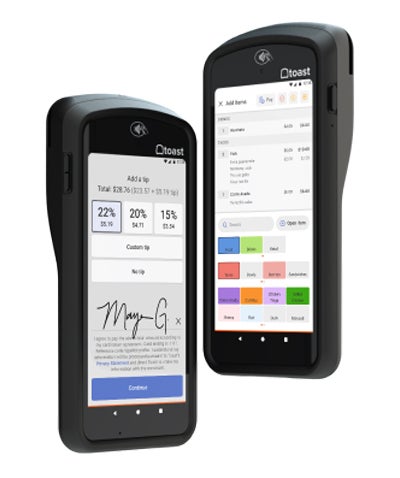
Pros and cons
| Pros | Cons |
|---|---|
|
|
PayPal: Best variety of payment types

Our rating: 4.22
PayPal is a bit of an oddball on this list. It’s not just a point of sale; it’s also a form of payment. And while Square also boasts similar market coverage by way of its Cash App, it has yet to rival the ubiquity of PayPal.
PayPal can be used as an alternative form of payment on digital storefronts for a host of global brands. And that same universality extends to the kinds of payments that PayPal allows you to accept when using it as a POS. Credit/debit cards, BNPL, digital wallets (including cryptocurrency), Venmo, and even QR code payments are all on the list.
Why we chose PayPal
In addition to the numerous and varied forms of payment it accepts, PayPal also offers free POS accounts and free merchant accounts. Plus, with some of the lowest flat-rate transaction costs in the market, it serves very well for freelancers, sole proprietorship businesses, and other professionals who never know what to expect from their customers.
Pricing
- Mobile-paired card reader: $29 (for the first device; additional card readers at $79 each).
- POS terminal: $199
- Card-present transactions: 2.29% + $0.09
- Manual entry transactions: 3.49% + $0.09
- QR code transactions: 2.29% + $0.09
- Invoicing (PayPal payments): 3.49% + $0.49
- Invoicing (cards and other payments): 2.99% + $0.49
Features
- Free POS app for iOS and Android.
- Discount on first card reader device.
- Integrates and is compatible with just about everything.
- Nearly every major payment format is supported.
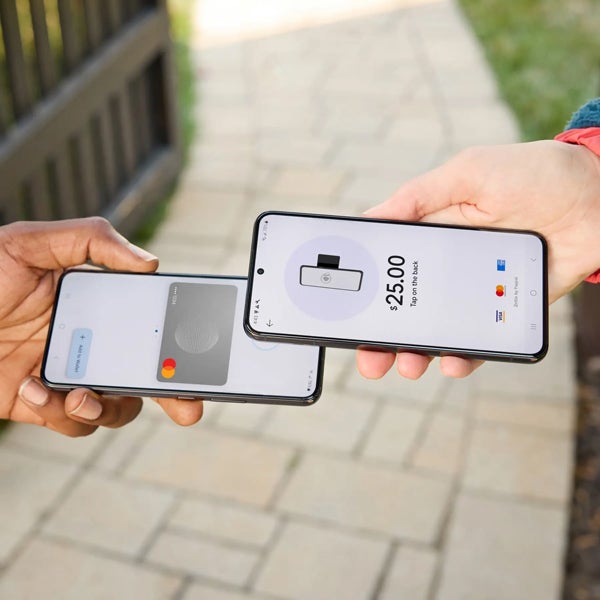
Pros and cons
| Pros | Cons |
|---|---|
|
|
Lightspeed: Best for complex retail

Our rating: 4.13
We mentioned added features up in the Toast section, but food service isn’t the only area that benefits from things like inventory management, payroll, and other tangential functionality. In fact, some businesses cannot operate effectively without a way to accurately track inventory and connect it to the system that handles how customers make purchases.
That’s why Lightspeed is on our list. Capable of meeting the needs of a comparatively broader market than Toast, Lightspeed offers POS solutions with integrated tools for things like advanced inventory management and tracking. It easily has more features than a new retail outfit will need to handle day-to-day operations, but growing businesses with deep product catalogs will find it well-suited to their more complex needs.
Why we chose Lightspeed
Many POS solutions focus almost entirely on transactions alone. Lightspeed is built to serve as potentially the only digital retail solution a business needs. Its feature set includes an inventory system, channel-agnostic loyalty programs, marketing, workflows, and a whole lot more.
If you need to upgrade your POS system to keep up with your evolving business but don’t want to spend months vetting SaaS providers for every distinct function of your organization only to wind up with a patchwork tech stack, Lightspeed is an excellent alternative.
Pricing
Lightspeed’s pricing is variable, based on the number of store locations and registers in operation and where the business is located geographically. The figures listed below are based on its pricing for US businesses, with one location and one register.
- Basic: $109/month, or $89/month when paid annually.
- Core: $179/month, or $149/month when paid annually.
- Plus: $289/month, or $239/month when paid annually.
Features
- POS functionality, plus other important retail tools: marketing, inventory, workflows, and more.
- “Omnichannel” (there’s that word again) loyalty program tools, so your customers can be rewarded no matter where they shop.
- 24/7 customer support.
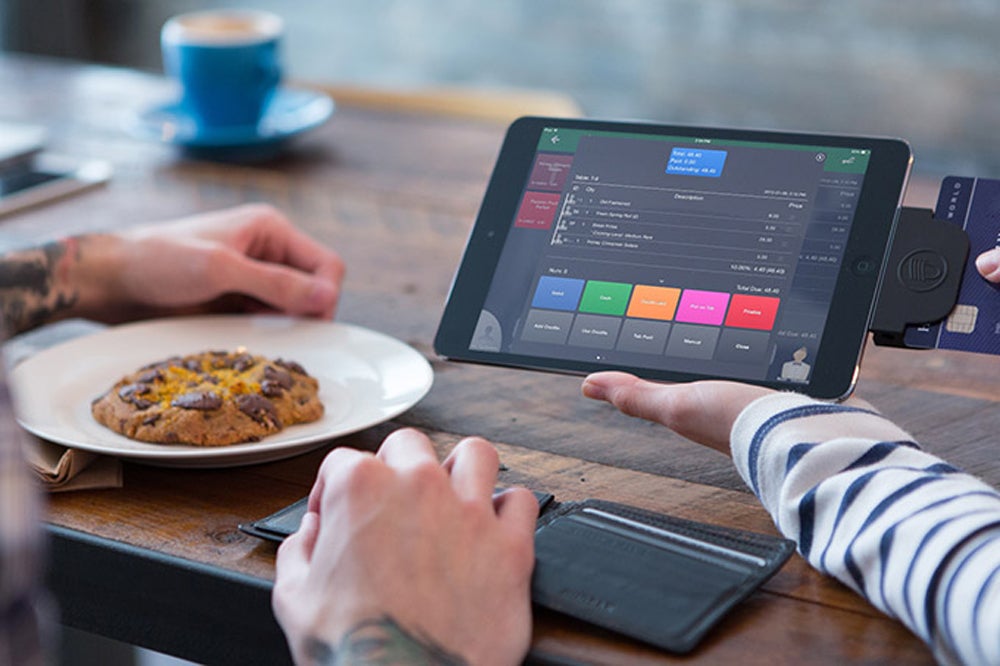
Pros and cons
| Pros | Cons |
|---|---|
|
|
How do I choose the best mobile-ready POS system for my business?
So, what if none of those vendors strike your fancy? Or, conversely, that more than one seems like a solid fit for your business? In that case, take our list of key factors and apply them to your own research based on how they reflect your current needs.
Price and cost
The average consumer would probably be flabbergasted to learn that even the transfer of money during a purchase requires an additional transference of money. For all of us, it’s business as usual.
There’s no getting around the issue of fees and expenses, as how the POS vendor generates its revenue will directly impact you — it’s coming out of your profits, after all. So you’ll want to examine the fee schedule for a given vendor carefully, do a mock-up of what that might look like cost-wise for you, and then compare that to others on your shortlist.
With cost, there are two primary forms you’ll see from POS solutions: monthly subscriptions (and other recurring, fixed costs) and transaction fees.
Subscription costs may be tied to a contract or might be month-to-month. If you’re using hardware other than a smartphone you already have on hand, either through an outright purchase or a payment plan, that may be a factor in the costs. Some are tied to the number of locations or registers in use. Or, depending on the vendor, there may not be a monthly fee at all.
For transactions, it’s important to note how some vendors charge variable rates based on things like transaction type (card present, manual entry, etc.), card type, processor choice, transaction volume, and the like. Some vendors, on the other hand, charge a flat fee across the board. Which one breaks down as the least expensive will ultimately depend on the particulars of your business.
Support and service
Like how “no news is good news,” not needing to call customer support is just as good as having the best customer service in the market. Realistically, though, there will always be a need to talk to somebody on the vendor’s side, given enough time. Things break with updates, systems go down, accounts have to be updated, etc. When these happen, it’s preferable to have a vendor that will actually let you talk to a human being in real-time.
How much that matters, though, will depend on how often things go wrong. This means you’ll want to examine things like guaranteed uptime, customer reviews mentioning the frequency of outages or technical issues, and similar details.
Hardware compatibility
A big reason you’re reading this article rather than some of our other articles on POS options (probably; we’re just postulating here) is that you want one that can be used with a mobile device, like a smartphone. So we’ve only included vendors on this list that provide some kind of mobile functionality. But “mobile” can mean anything from “any mobile device” to strictly proprietary hardware and everything in between.
To be clear, it can take quite a bit of digging to figure out what hardware a given POS system will support, and the language isn’t always clear across the board, so don’t simply assume (even if they use words like “mobile” in their copy and marketing materials).
What’s more, you might find yourself needing more dedicated POS hardware, either now or in the future. That’s why it’s a good idea to see what else the POS vendor supports, if they restrict your options, and if there are any clear downsides to using third-party devices with the vendor’s software.
Third-party integrations
How the software interacts with other software is an equally important consideration. If you have an online storefront, an inventory application, third-party marketplaces, or other important tools and platforms with which you need the POS to be interoperable, look for those integrations specifically and don’t take them for granted.
That goes for payment processors, too, and any other link in the transaction chain that you need to be particular about. Some vendors require you to use their processor of choice or to pick from a limited selection, rather than allowing you to bring your own. Some let you use whatever you like, but charge extra for third-party processing. Some don’t offer combined POS/processing at all, and you have to bring your own processor to the party.
Nonstandard functionality
Lastly, be aware that some functions that seem like obvious requirements to you are industry-specific to the POS market. Food service often stands out as having uncommon needs, such as menu-based ordering, online ordering and integration with delivery platforms, customer-facing terminals, and so on.
Your odds are better if the vendor explicitly mentions your industry as one it serves, but that’s not a guarantee. And even when the features are there, they may not function exactly how you need them to, so always double-check and test drive wherever possible.
Methodology
For this list of app-based and mobile-friendly POS providers, we rounded up an initial round of popular solutions. We reviewed candidates using our standardized scoring system, considering a host of key factors — pricing, software features, hardware options, user experience, reliability. and more. As often as possible, we used first-hand information (direct experience with the solution, demos, free trials, etc.).
After that, we leaned on primary sources via feedback from current and former customers and aggregated review scores (from sites like Gartner and G2). Then, we compared those experiences against the branded marketing and sales boilerplate to see how closely the product matched up with expectations.

